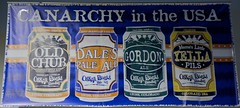The Lytro Camera and Food
 Saturday, March 10, 2012 at 10:35AM
Saturday, March 10, 2012 at 10:35AM Have you heard of the Lytro camera yet? The Lytro is a small, unusually shaped camera that's most amazing ability is to be able to re-focus a photo after it has been taken. You can read my initial impressions and thoughts on the Lytro on my more nerdy blog.
The Lytro technology might come in handy for food photography. Focusing on food can be difficult since the camera is often very close to the food. You can click on various parts of the cafe latte above and see how the image is re-focused. Nice, right?
Unfortunately I can't recommend the Lytro for food photography right now. At least I cant suggest it as your primary camera. Why isn't the Lytro a great camera for food photography yet? First of all, the amount of post processing available to the artist is limited to the same changing of focus that the Lytro viewer gives. The artist can't correct white balance, exposure, contrast, or even crop the photo.
When I take photos of food, I spend a lot of time and effort after the shot to make it look good and convey the story I want. While it is a relief to be able to take photos without worrying about post-processing, I don't feel comfortable sharing photos that didn't turn out well. And when it comes to food, I want to do the Chef and the Kitchen's work justice. I'm sure you'll occasionally see a Lytro photo here that fits the bill, but with the current technology it will be rare.
The good news is that Lytro has expressed their intent to add features and even potentially make a more professional camera based on their technology. I think it would be nice to avoid throwing away those photos with the focus on the sauce rather than the more interesting parts of the dish.

